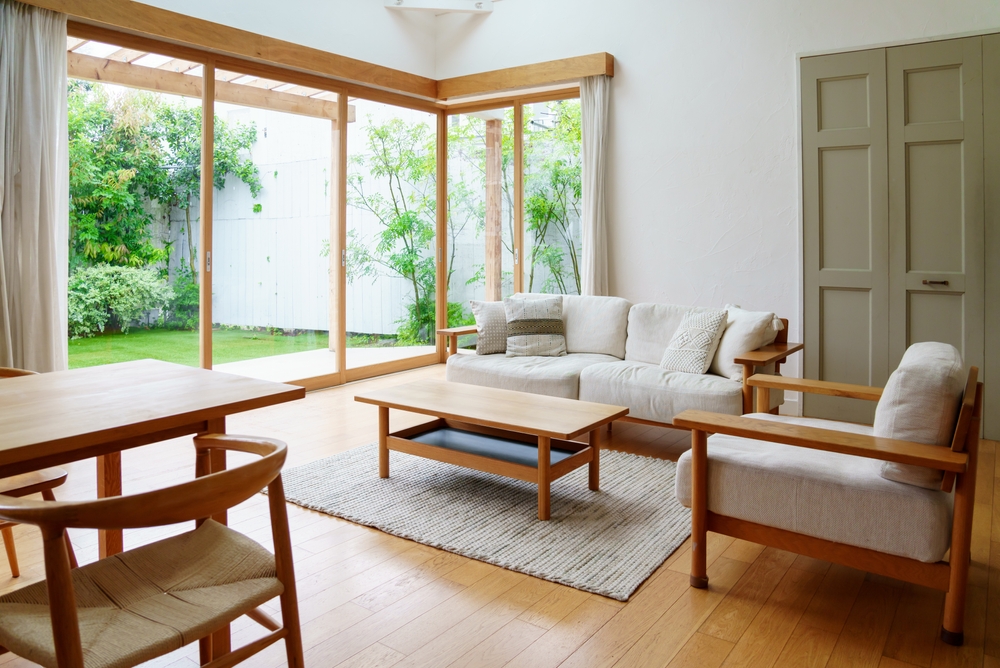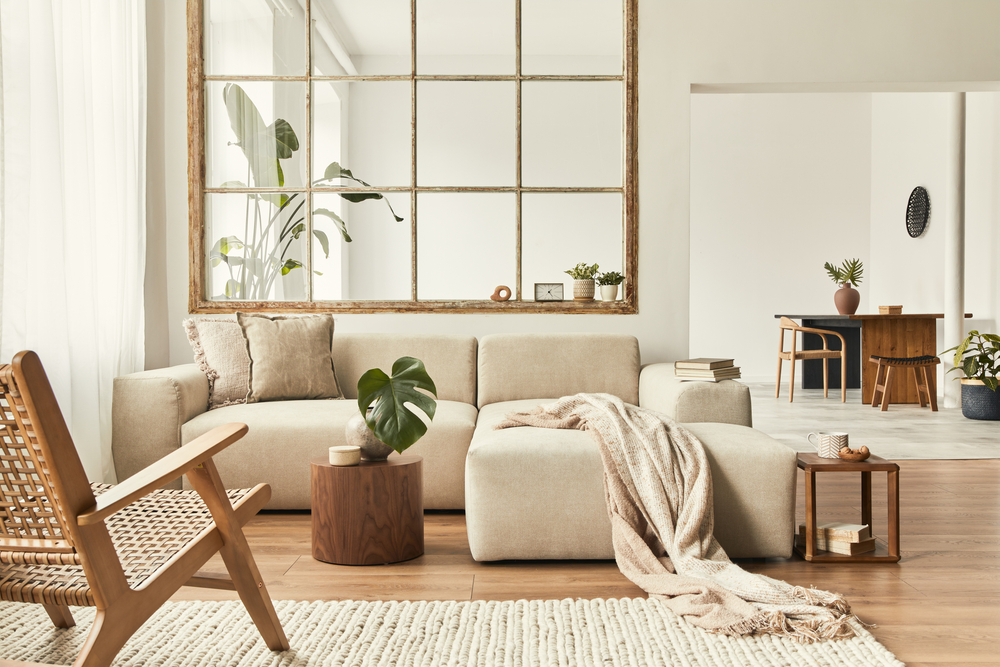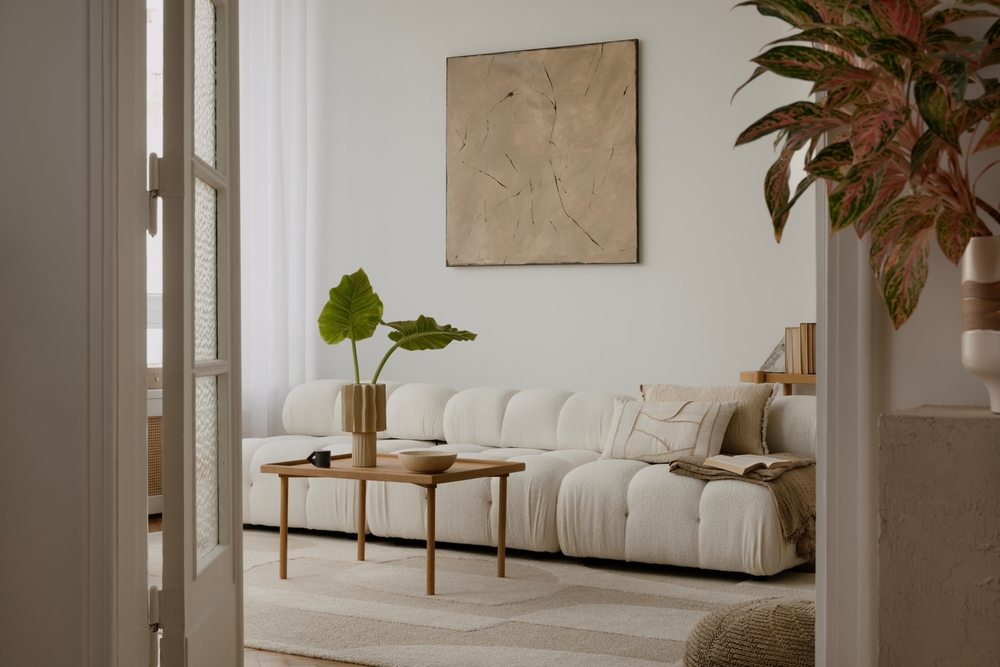Table of Contents
When you apply these principles to your living room, you can transform it into a space that supports relaxation, creativity, and even success. In this article, we’ll explore how to use feng shui to create an environment that works for you, from thoughtful layout choices to embracing inspirational design that enhances your daily life.
What is Feng Shui?
Feng shui is a traditional Chinese practice that focuses on arranging your living or working space to harmonize with natural forces. The term translates to “wind” and “water”, highlighting the connection between your environment and the flow of energy, or qi (also written as chi). Feng shui aims to promote balance, health, and prosperity in your life through aligning objects and structures with this energy.
This practice traces its origins back thousands of years to ancient China, where it was used to plan cities, design buildings, and even select burial sites. It’s rooted in Daoist principles, emphasizing the balance of yin and yang and the elements like wood, water, fire, earth, and metal.
Ultimately, feng shui is about creating spaces that feel right. Whether you’re rearranging furniture or choosing colors, feng shui encourages you to work with the energy in your surroundings to enhance your wellbeing.
Benefits of Feng Shui
Feng shui offers more than just a visually pleasing space. It can also transform how you feel and function in your environment. You create a space that supports balance, clarity, and personal growth by aligning your surroundings with natural energy. Here’s how feng shui can benefit you:
- Improves energy flow: A well-arranged space allows chi to move freely, creating a calm and uplifting atmosphere.
- Enhances focus and productivity: Organizing your environment with intention can reduce distractions and help you stay on task.
- Promotes emotional well-being: Thoughtful layouts and colors can boost your mood and reduce stress.
- Supports better relationships: Creating harmony in your home fosters positive connections with family and friends.
- Attracts abundance: Feng shui principles help you design spaces that encourage prosperity and success.
- Boosts physical health: Arranging furniture to allow free movement and incorporating natural elements can promote relaxation and vitality.
Design Principles of Feng Shui
Feng shui design principles revolve around creating balance and harmony in your environment. This is achieved by optimizing the flow of chi (the energy that connects everything). Here are some key concepts to guide you, especially when considering feng shui living room placement or creating sustainable home designs:
- Chi energy: This vital energy moves through your space like wind or water. It enters and exits through doors and windows, making their placement essential for maintaining a balanced flowÔÇï.
- Yin and Yang: Balance opposites, like light and dark, to create a calming yet dynamic environment that supports your mood and healthÔÇï.
- The five elements: Incorporate wood, fire, earth, metal, and water in thoughtful ways, as each element influences the energy in your living room arrangement. For instance, wood can bring vitality, while metal supports clarityÔÇï.
- Decluttering: Clear out dust and unnecessary items. Clutter traps stagnant chi, which can negatively affect your energy and productivityÔÇï.

5 Feng Shui Living Room Tips
Understanding how energy flows through a space is key to creating a harmonious feng shui living room. Aligning your layout, lighting, and decor with feng shui principles invites positive chi into your home. Below, we’ll explore practical tips for enhancing the energy in your living room and creating a balanced, inviting space.
1. Let fresh air in to clear stale energy
Letting fresh air into your living room is a simple yet powerful feng shui practice to clear stale energy and revitalize the space. Open windows regularly to invite natural airflow, which promotes healthy chi and prevents stagnation. Fresh air supports a harmonious feng shui living room layout by refreshing the energy that flows through the room.
For an effective living room feng shui arrangement, pair ventilation with plants to purify the air further. If opening windows isn’t an option, use an air purifier to maintain cleanliness. A well-ventilated space fosters positivity, making your living room feel vibrant and welcoming.
2. Reduce living room clutter
Reducing clutter is essential for good feng shui in your living room. Clutter traps stagnant energy, blocking the natural flow of chi and creating a sense of heaviness. Enhance your living room feng shui by sorting through items you no longer use or need. Keep surfaces clean and organized, and avoid overcrowding shelves or tables.
Additionally, look for hidden storage solutions like baskets or cabinets to maintain tidiness as you begin designing feng shui for your living room. A clutter-free space will improve energy flow and create a calming, inviting atmosphere for you and your guests.
3. Focus on the five elements
Incorporating the five elements is a key step in creating balance and harmony in your feng shui living room. Each element (wood, fire, earth, metal, and water) has unique qualities that influence the energy in your space. Aim to include all five for a well-rounded atmosphere.
Introduce wood with vibrant plants or green decor for growth and creativity. Use fire through candles or warm lighting to bring energy and passion. Add earth with pottery or neutral tones for grounding. Decorate with metal accents like sculptures or mirrors for clarity, and include water with glass or wavy patterns to evoke calm. Remember, balance is the goal.
4. Embrace warm lighting
Warm lighting is yet another essential for creating a cozy and inviting atmosphere in your feng shui living room. Lighting also influences the flow of chi, and softer, warmer tones encourage relaxation and harmony.
A few tips for embracing warm lighting include incorporating dimmable lamps, string lights, or candles to provide a gentle glow that compliments the space’s energy. Avoid harsh, overly bright lights that can feel overwhelming. Place lights strategically to eliminate dark corners where stagnant energy might collect. Furthermore, layer your lighting with a mix of floor lamps, table lamps, and overhead fixtures to create depth.
5. Use the command position to determine layout
The command position is an additional design principle for creating a balanced feng shui living room layout. This placement ensures you feel secure and in control of your space. To apply it, position your main seating, like a sofa or favorite chair, so it faces the room’s entrance without being directly in line with the door. This arrangement allows you to see who enters, fostering a sense of stability and ease.
Avoid placing seating with its back to the door, as this can create unease. Enhance your feng shui living room arrangement by anchoring the space with a solid wall behind the seating for added support.

Wrapping Up: Living Room Feng Shui
Living room feng shui is all about focusing on the flow of chi and creating a space that feels balanced and inviting. Remember to arrange furniture in the command position, keep your space clutter-free to allow energy to flow smoothly, and incorporate the five elements into your decor.
SHAWOOD homes are an excellent choice if you’re seeking well-designed spaces that align with feng shui principles. Homes are built with mindful layouts and thoughtful spaces that complement feng shui, promoting harmony and positive energy throughout. With the right approach, your living room can become a sanctuary of balance, energy, and comfort.
Frequently Asked Questions

What is the best feng shui layout for a living room?
The best feng shui layout for a living room emphasizes balance and clear energy flow. Position your seating in the command position, where you can see the entrance without being directly in line with the door. This promotes a sense of security. Keep the room open and uncluttered to allow chi to circulate freely. Use soft, warm lighting and incorporate elements that represent wood, fire, earth, metal, and water for a balanced feng shui living room harmony.

What direction should you face in a living room?
In feng shui living room placement, it’s ideal to face the main seating towards the door, without sitting directly in line with it. This positioning puts you in the command position, where you can see who enters while feeling secure. If possible, align your seating to face a wall for support and stability. Consider the room’s energy flow and adjust accordingly to create a balanced and welcoming space.

What is an example of bad feng shui in a living room?
An example of bad feng shui in a living room is placing furniture with its back to the door. This creates a feeling of vulnerability and disrupts the flow of chi. Another issue is clutter, which blocks energy movement and makes the space feel stagnant. Furthermore, avoid sharp corners pointing at seating areas, as they can also create negative energy.





